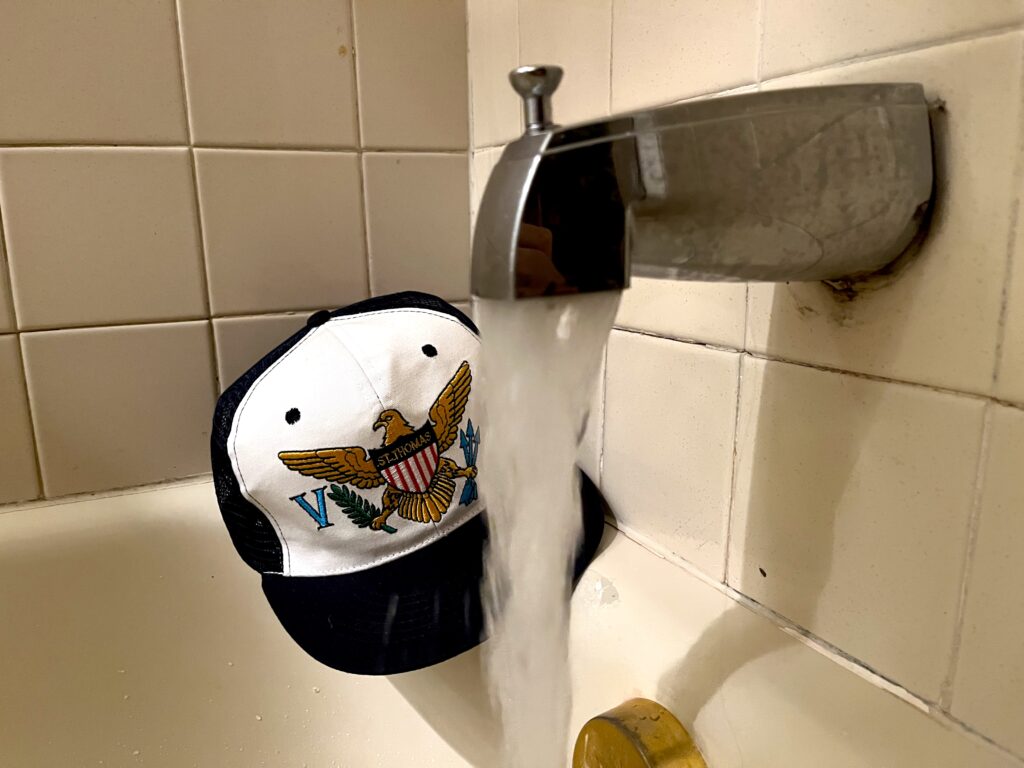
Flushing St. Croix’s municipal water pipes for 10 to 13 minutes cleared lead and copper contaminants below federal safety thresholds and plans to retest St. Thomas and St. John were underway, Water and Power Authority officials said Saturday.
A Government House advisory against drinking WAPA water remained in place across all of St. Croix.
WAPA and the Department of Planning and Natural Resources tested 37 sites on St. Croix twice on Oct. 21 — once immediately upon opening the tap and once after flushing the line for more than 10 minutes, officials said.
WAPA Chief Executive Officer Andrew Smith had explained the elevated metal levels were likely due to waterlines left long dormant, with sediment and water’s natural corrosive elements leaching the pipes. The 60-year-old infrastructure could take 20 years to replace, with 200 miles to dig up. Federal funds could help, Bryan said.
Cistern water remains safe if it’s not refilled with WAPA water. Boiling water does not remove lead or copper. Water from the pipes tested before flushing had dangerously high levels of both.
Although no amount of lead is safe, the Environmental Protection Agency has a 15-parts-per-billion safety threshold.
One test area in Strawberry Hill was found to have 1,600 parts of lead per billion and 5,500 parts per billion of copper — more than 106 times the EPA limit for lead and more than 4.2 times the acceptable copper levels. Another Strawberry Hill site came back 710 parts per billion lead and 6,000 copper.
Test sites in Grove Place, William’s Delight, Campo Rico, Profit, Sion Farm, Diamond, La Grange, Whim, Mon Bijou, Castle Burke, and Hannah’s Rest were also shown to have lead levels more than 10 times the federally accepted threshold. Sites in White Lady Colquhoun, One Love, near Marko School, Mt. Pleasant, St. John, Paradise, St. Georges, Barren Spot, and Country Club also had lead well above 15 parts per billion.
After 10-to-13 minutes of flushing the line, however, all the lines tested below the EPA’s allowed levels, Government House officials said.
In late September, 35 of 66 WAPA lines on St. Croix tested positive for elevated lead and copper levels. One unspecified test site was at 20,100 parts per billion lead — 1,340 times federal limits — and 137,000 copper — 105 times federal limits.
These EPA guidelines are potentially misleading as there is no safe level of lead for humans. Exposure to the metal is often associated with delayed mental development, emotional and cognitive problems, and other ills.
WAPA officials have blamed stagnant water as most people in St. Croix use cisterns, not WAPA water. But the EPA estimated 13,000 Crucians relied on WAPA water — including Congressional Delegate Stacey Plaskett.
It wasn’t yet clear when supplemental water testing on St. Thomas and St. John might start but WAPA officials said plans were under way.


